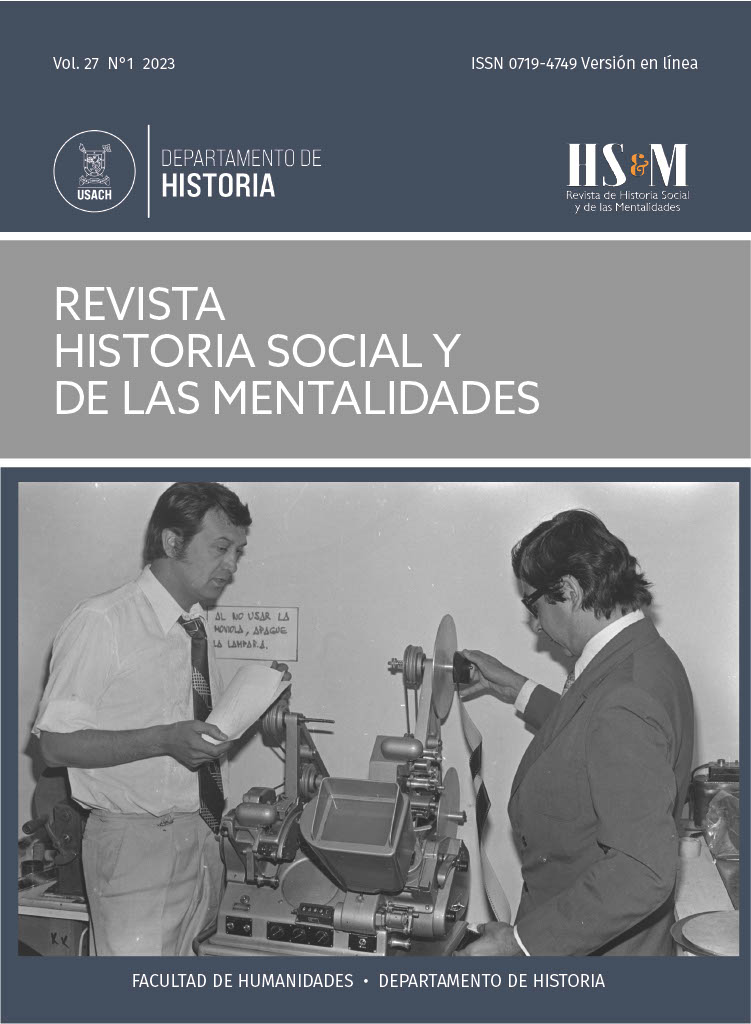Cinema and Reverberation: Zama, Montage and History
DOI:
https://doi.org/10.35588/rhsm.v27i1.5782Keywords:
Montage, Reverberation, Interruption, DemonumentalizationAbstract
Through a critical reading of Lucrecia Martel’s fourth film, Zama (2017), based on Antonio di Benedetto’s homonymous novel (1956), we elaborate a reflection on the relationship between cinema and history, highlighting the strategies used by the Argentine director in the making of her work. We maintain that, beyond a merely instrumental and illustrative use of cinema, Martel allows us to think of cinematographic montage as a way of denarrativizing and demonumentalizing the conventional narrative of history, thereby opening a relationship with the past, freed from the historicist logic that seems to characterize both the documentary genre and political cinema in general. In this sense, the question of history and its reverberations appears in Zama as elements that complicate the conventional relationship between cinema and politics.
Downloads
References
Andermann, Jens. New Argentine Cinema. I.B. Tauris, 2011.
Benjamin, Walter. La dialéctica en suspenso. Fragmentos sobre historia. ARCIS-LOM Ediciones, 1996.
–––––. “La tarea del traductor”, en: Obras Libro IV, Vol. 1. Abada Editores, 2010, pp. 9-22.
Christofoletti Barrenha, Natalia. La experiencia del cine de Lucrecia Martel: Residuos del tiempo y sonidos a orillas de la pileta. Prometeo, 2021. Dallas, Paul. “The Politics of Waiting: Lucrecia Martel on Zama”. Filmmaker, 2018. https://filmmakermagazine.com/104946-the-politics-of-waiting/#.Y0YaZS1h2Zb.
Deleuze, Gilles & Félix Guattari. “1837–Del Ritornelo”. Mil mesetas. Capitalismo y esquizofrenia. Pre-Textos, 1997, pp. 317-358.
Di Benedetto, Antonio. Zama. Adriana Hidalgo Editora, 2000. Didi-Huberman, Georges. Ante el tiempo. Historia del arte y anacronismo de las imágenes. Adriana Hidalgo, 2008.
Dillon, Alfredo. “Antonio Di Benedetto por Lucrecia Martel: la adaptación de Zama”. Badebec, Vol. 8, no. 16 (Marzo 2019), pp. 104-128. Germünden, Gerd. Lucrecia Martel. University of Illinois Press; Illustrated edition, 2019.
Jubis, Oscar. The Films of Lucrecia Martel: The Salta Trilogy. VDM Verlag Dr. Müller, 2010.
Martin, Deborah. The Cinema of Lucrecia Martel. Manchester University Press, 2016.
Pasolini, Pier Paolo. Cine de poesía contra cine de prosa. Anagrama, 1970. Ruiz, Raúl. La poética del cine. Ediciones Diego Portales, 2013.
Saer, Juan José. El concepto de ficción. Seix Barral, 2014.
Sánchez, Matilde. “‘Zama’, una película como reescritura virtuosa”. Re- vista Ñ, 2017. https://www.clarin.com/revista-enie/escenarios/za- ma-pelicula-reescritura-virtuosa_0_SkPlW6Fqb.html.
Selimovic, Inela. Affective Moments in the Films of Martel, Carri, and Puen- zo. Palgrave Macmillan, 2018. DOI: https://doi.org/10.1057/978-1-137-49642-3.
Thayer, Willy. Imagen Exote. Ediciones Palinodia, 2019.
Downloads
Submitted
2022-10-19Published
Issue
Section
License
Copyright (c) 2023 Revista de Historia Social y de las Mentalidades

This work is licensed under a Creative Commons Attribution-NonCommercial-NoDerivatives 4.0 International License.













